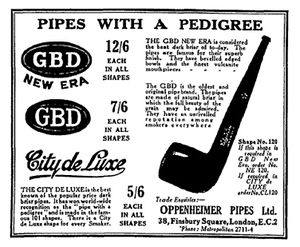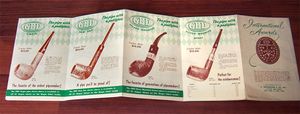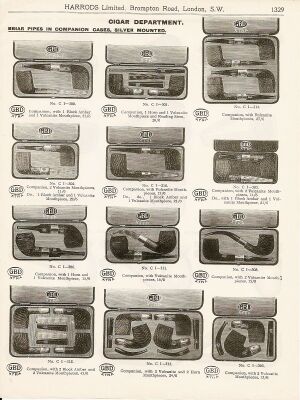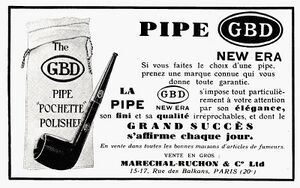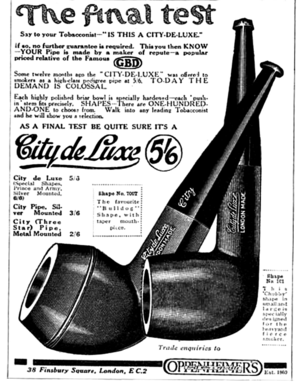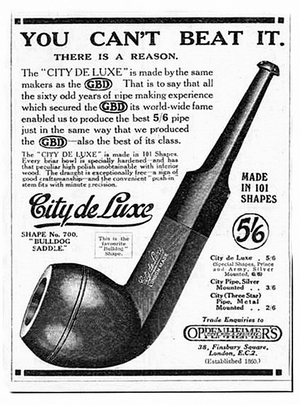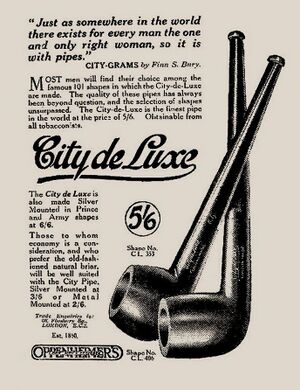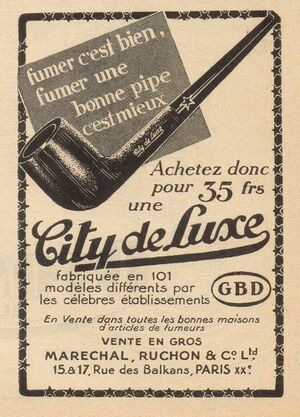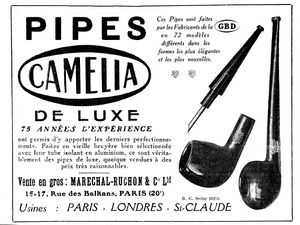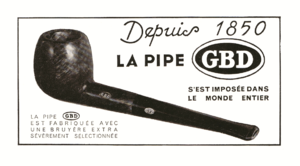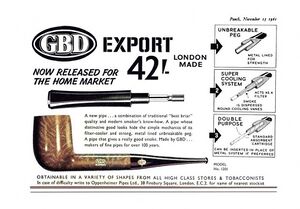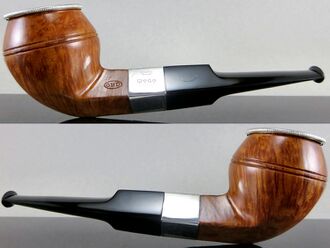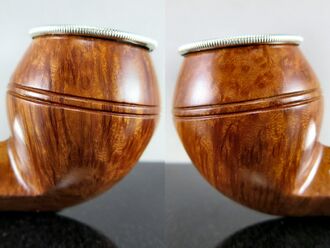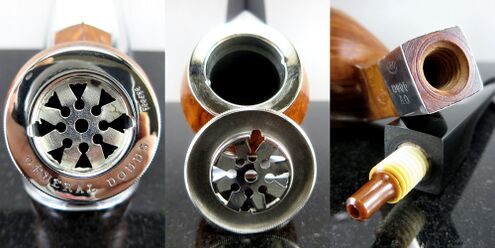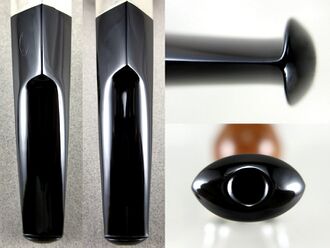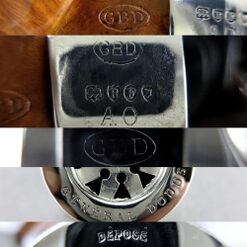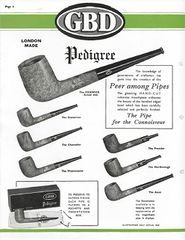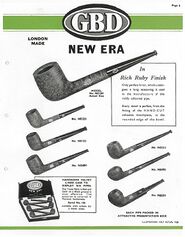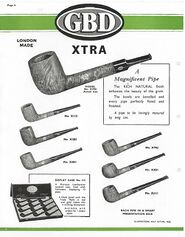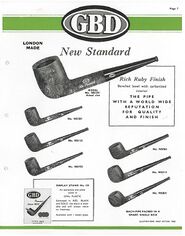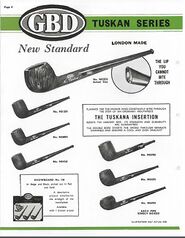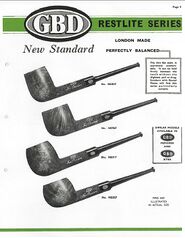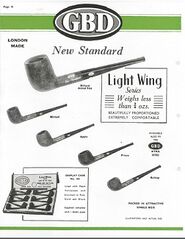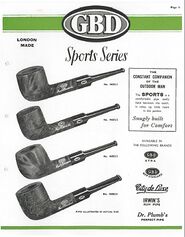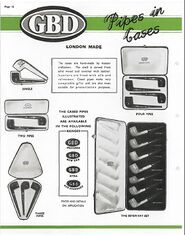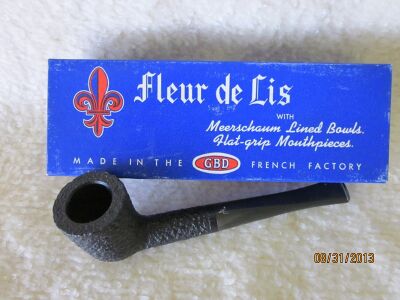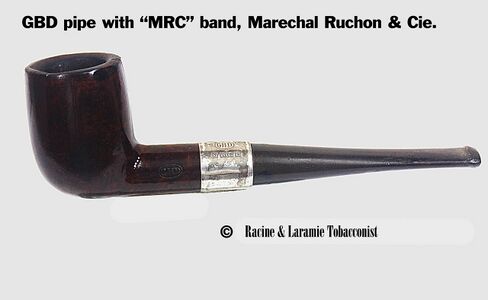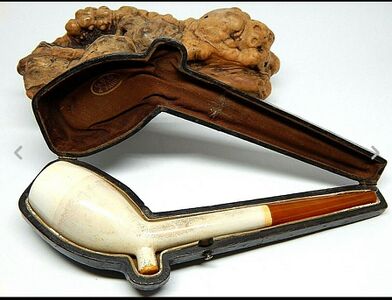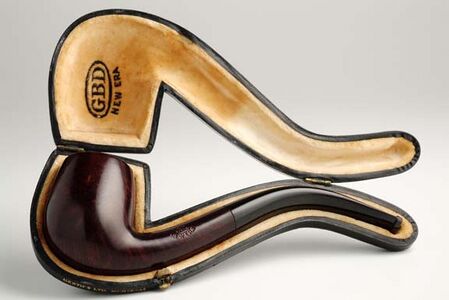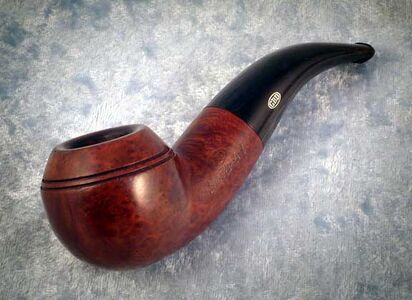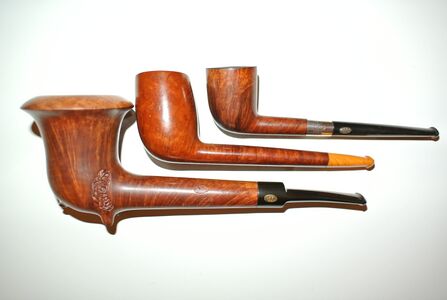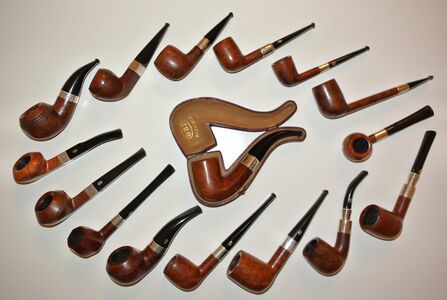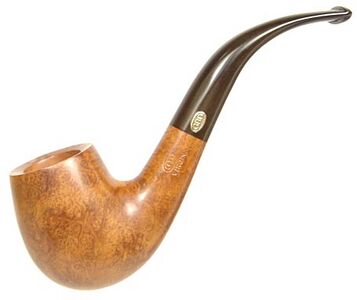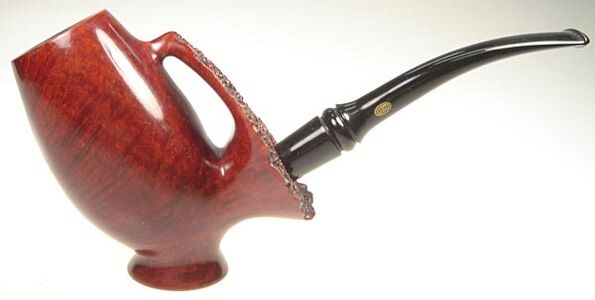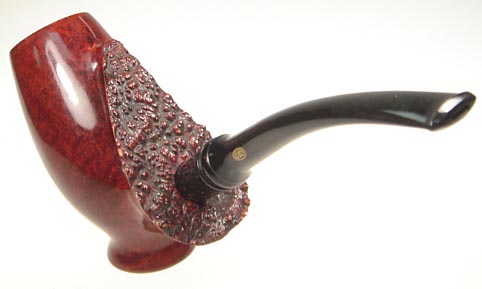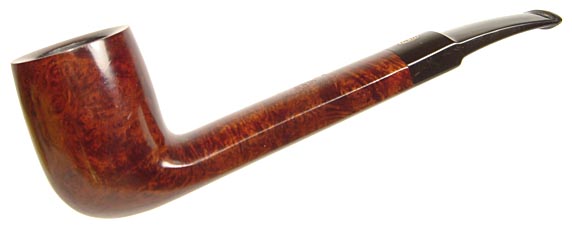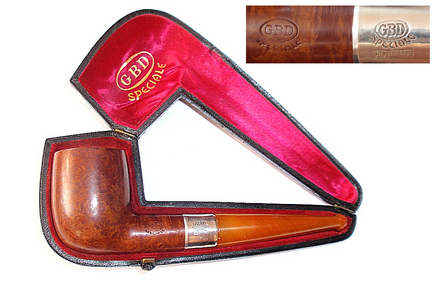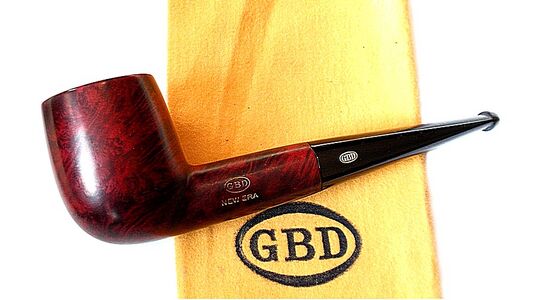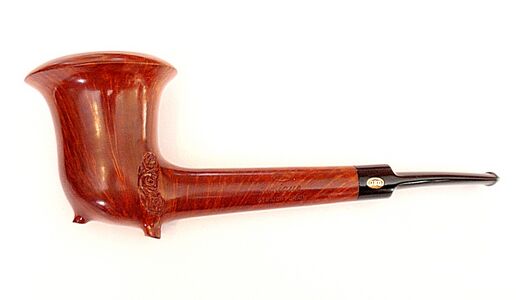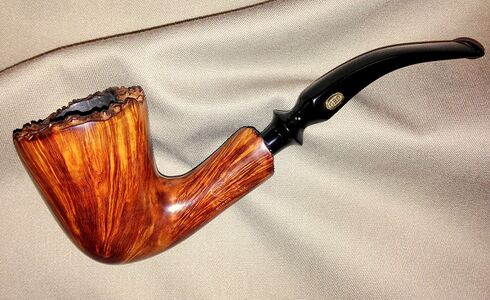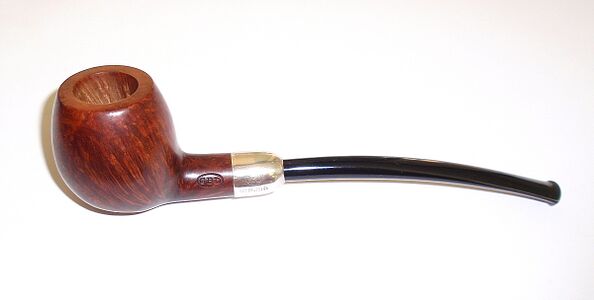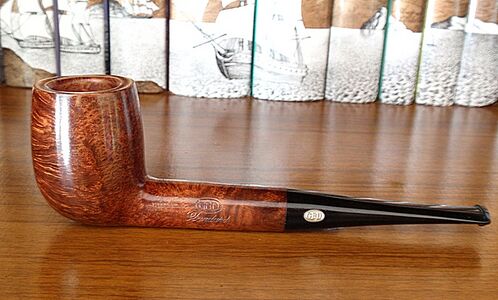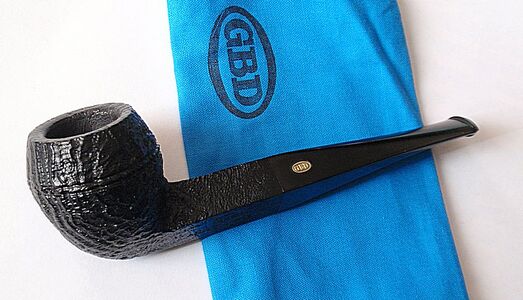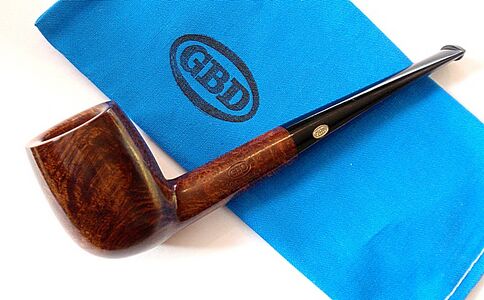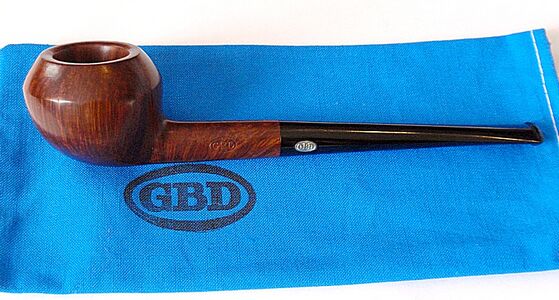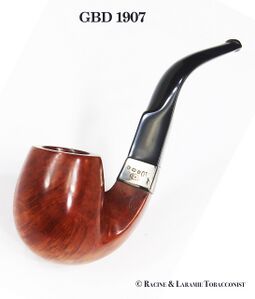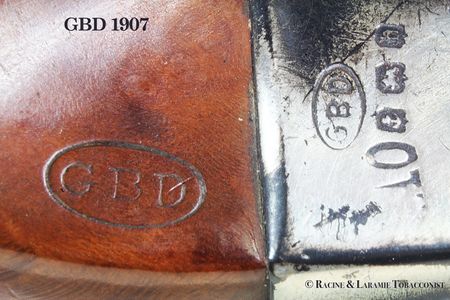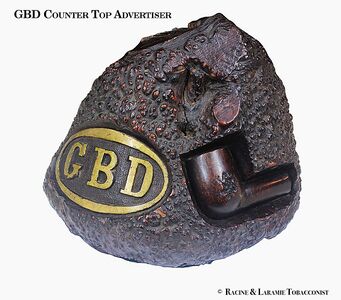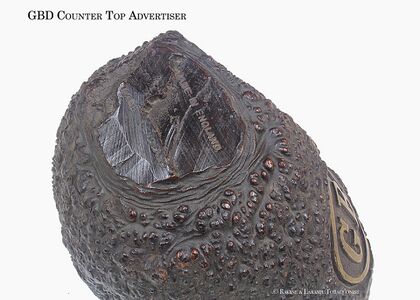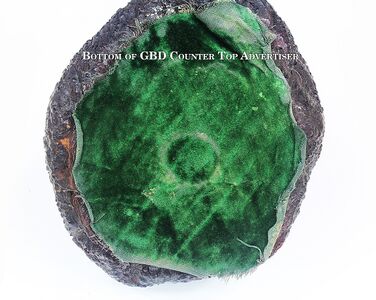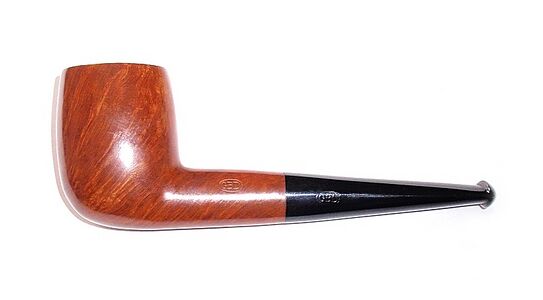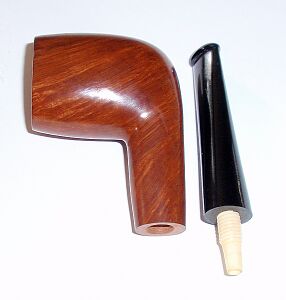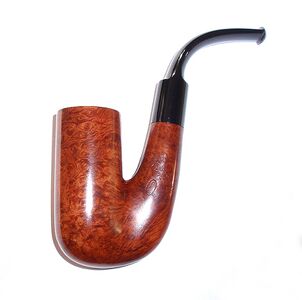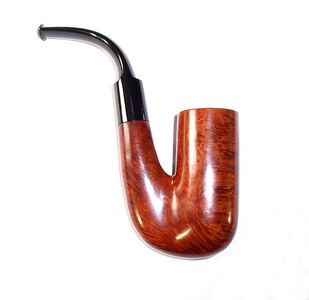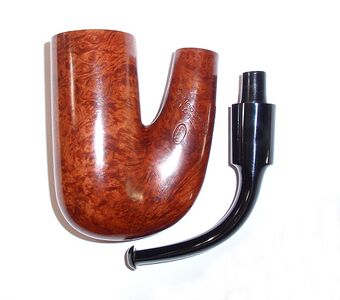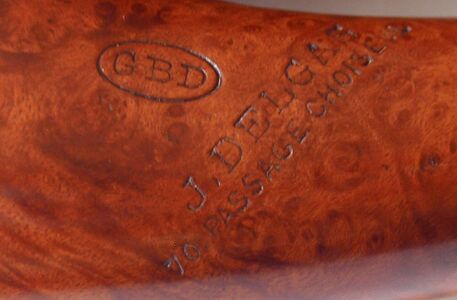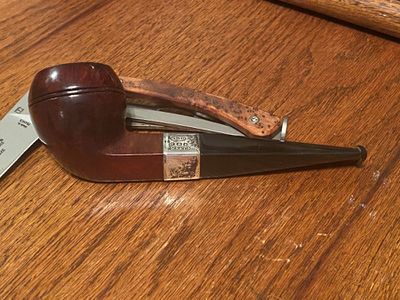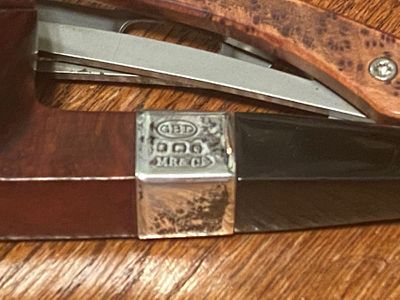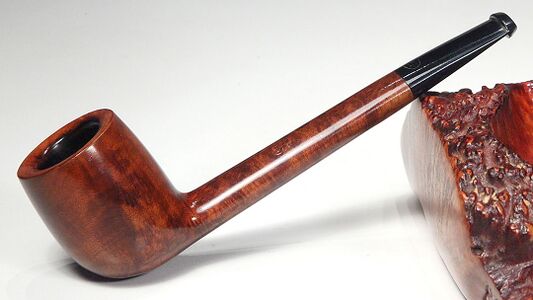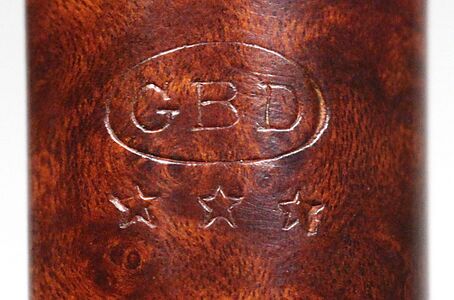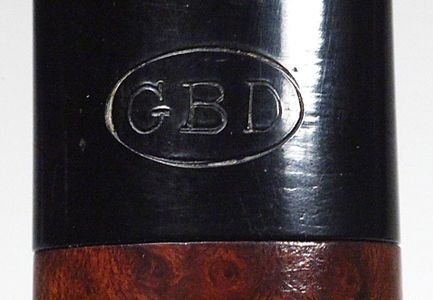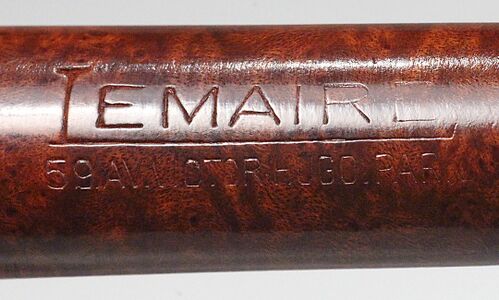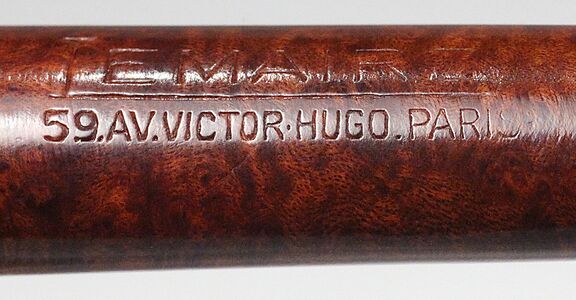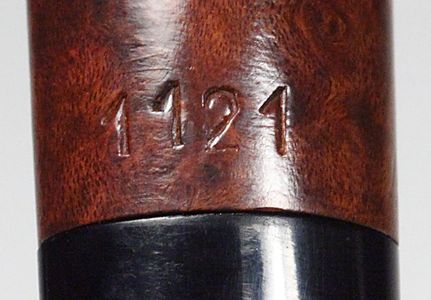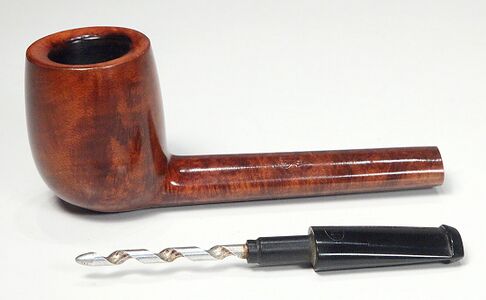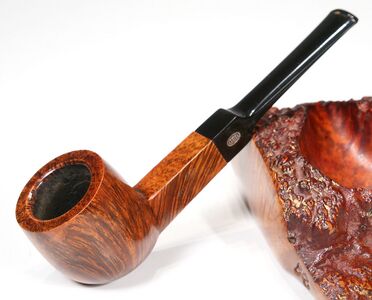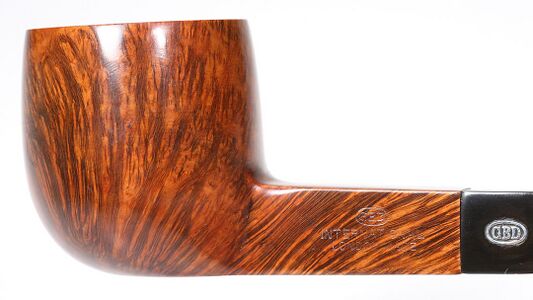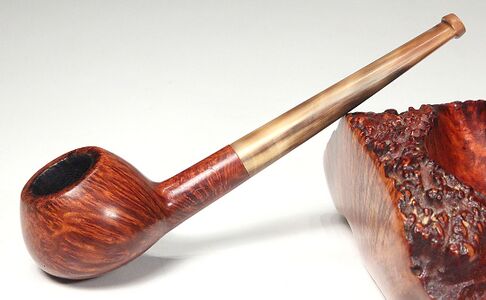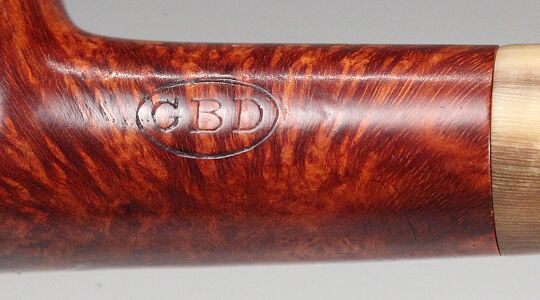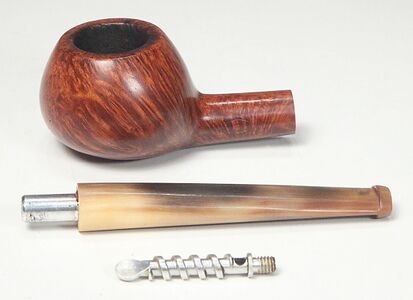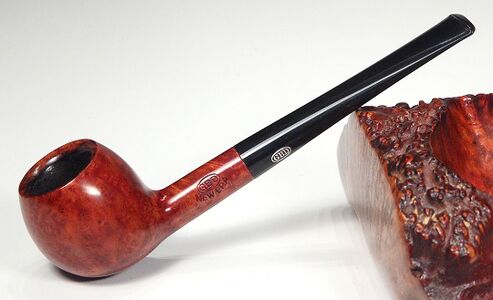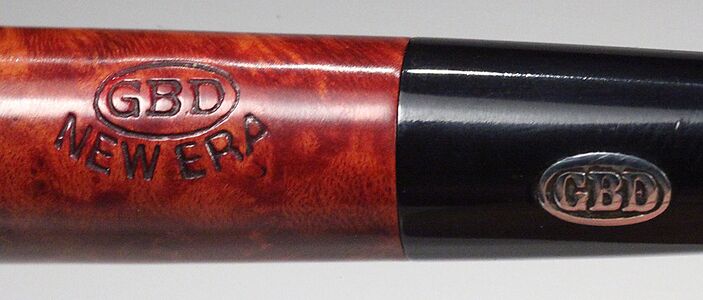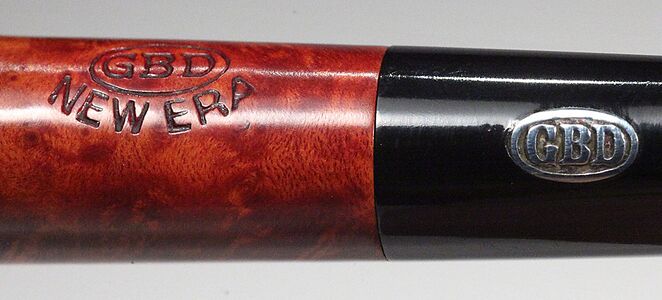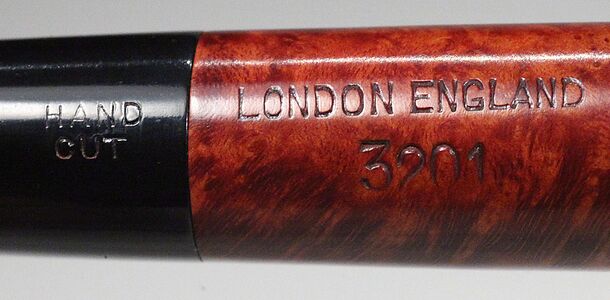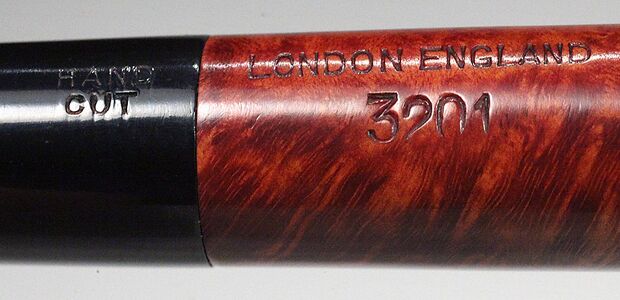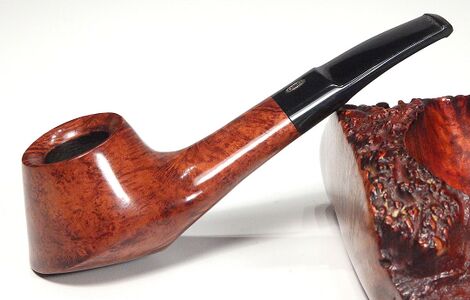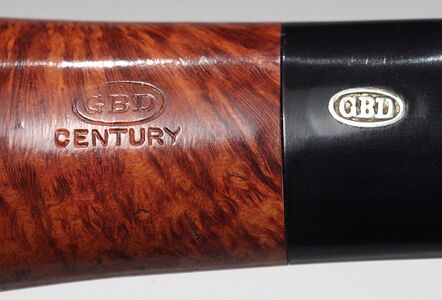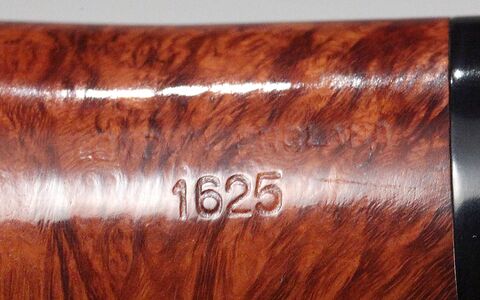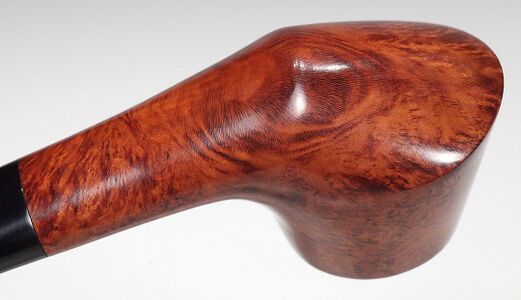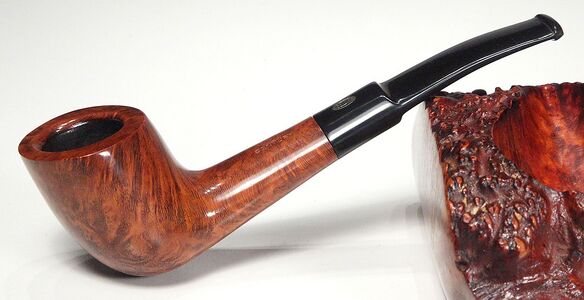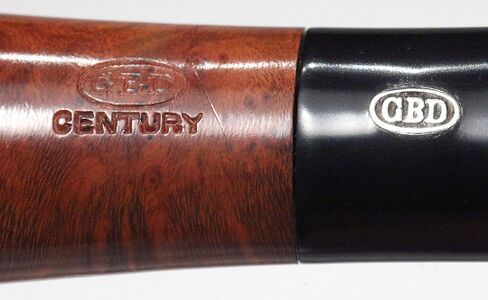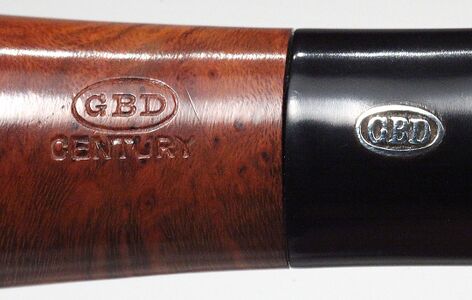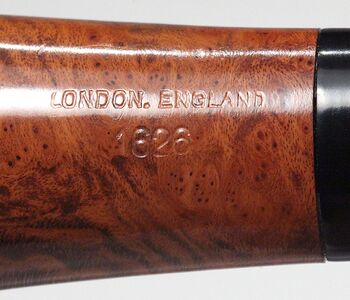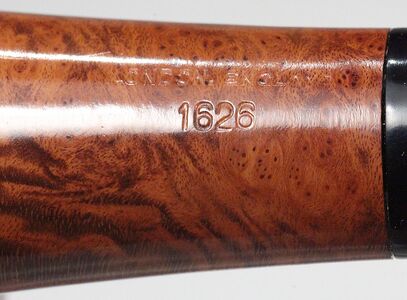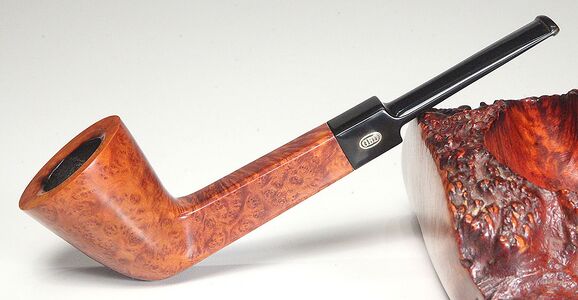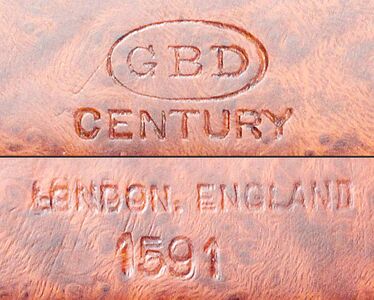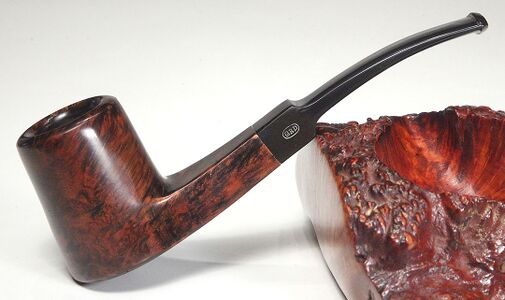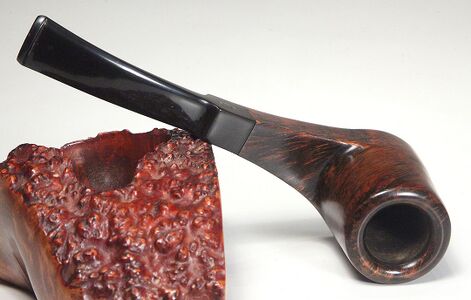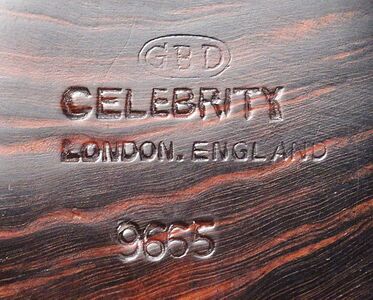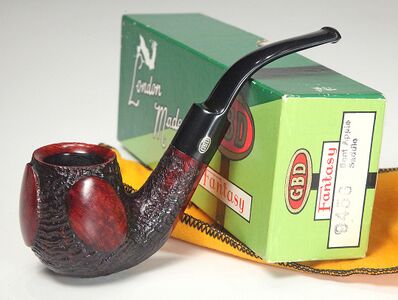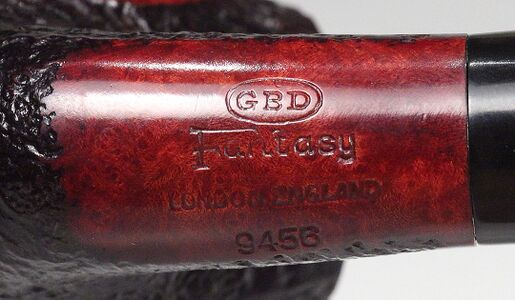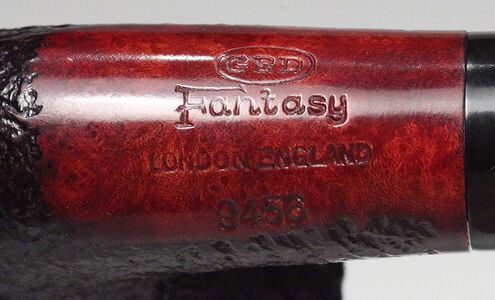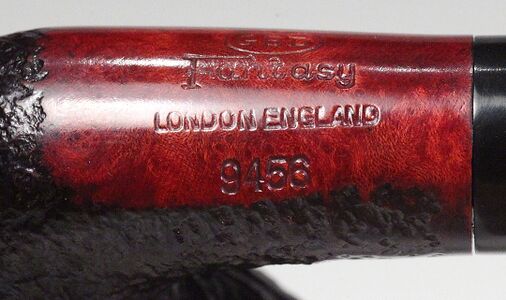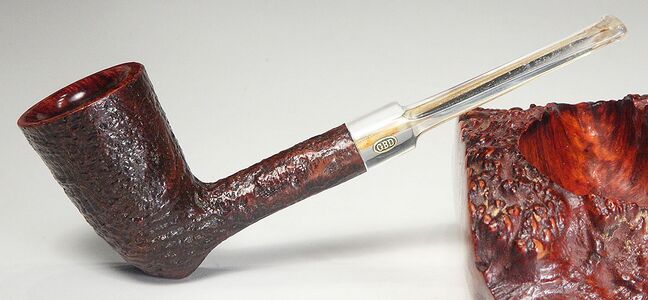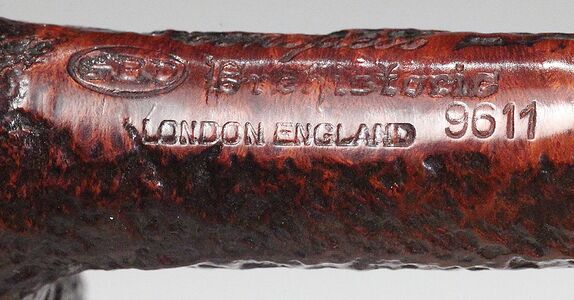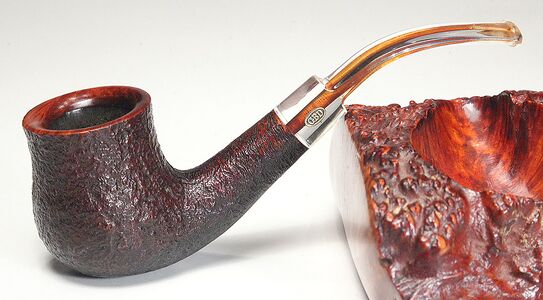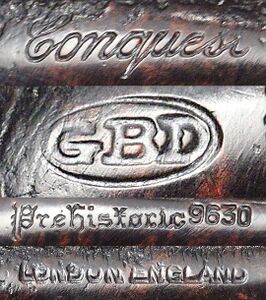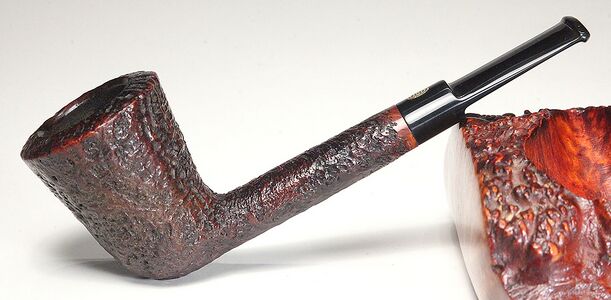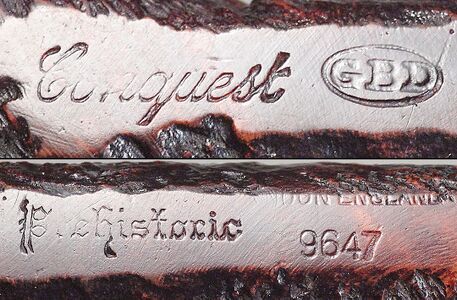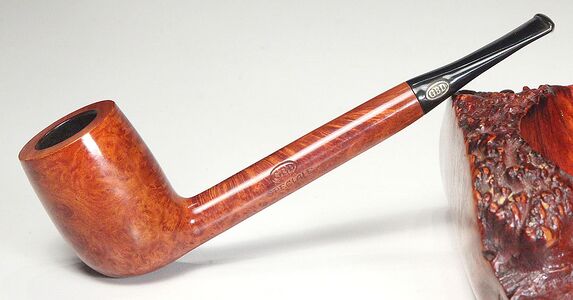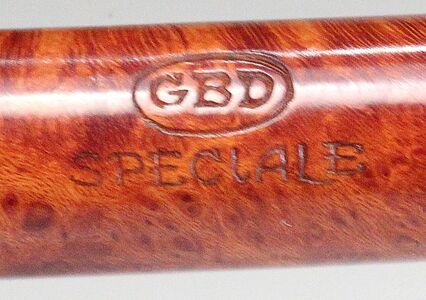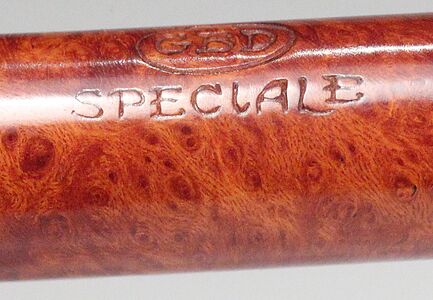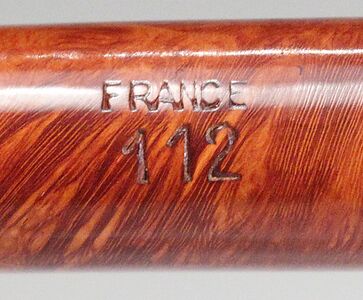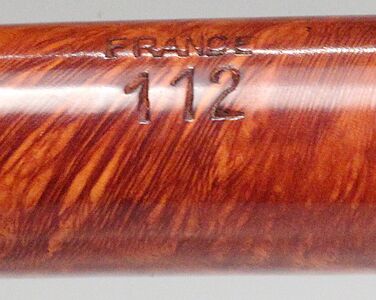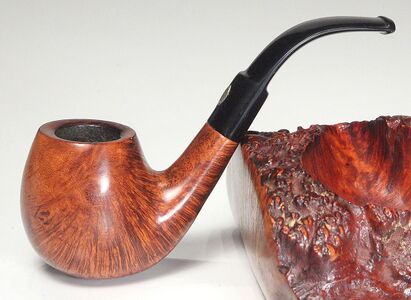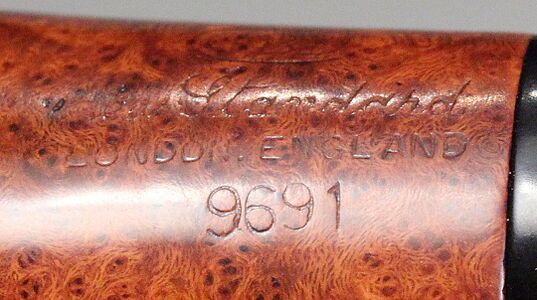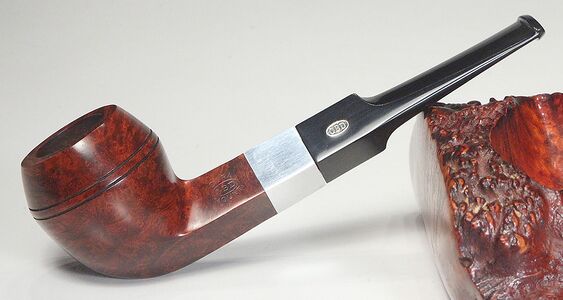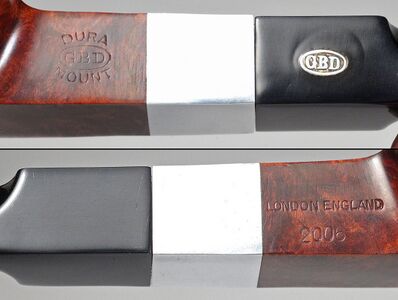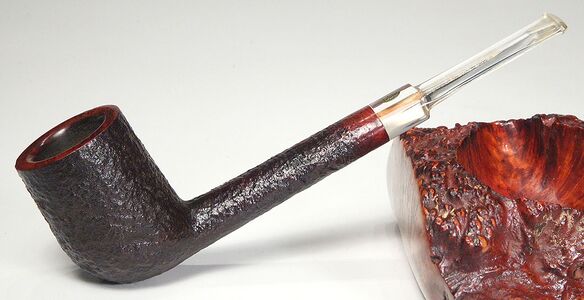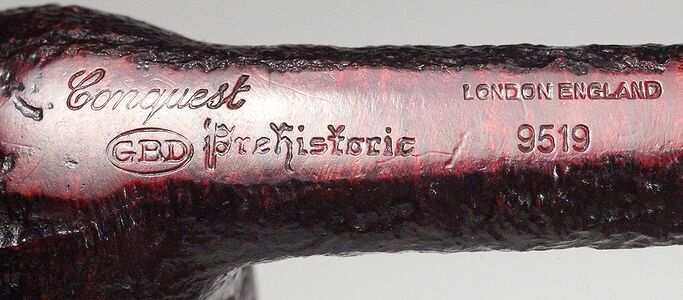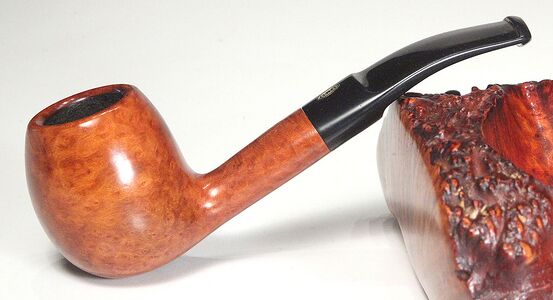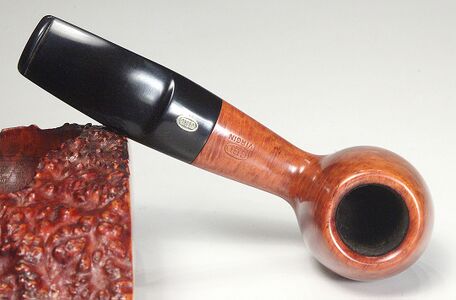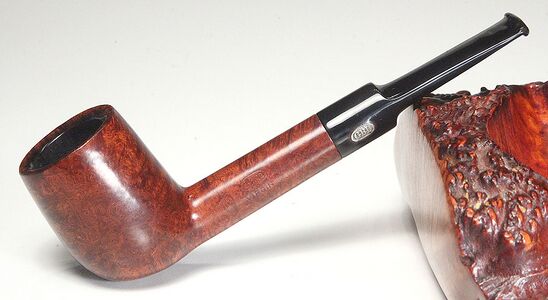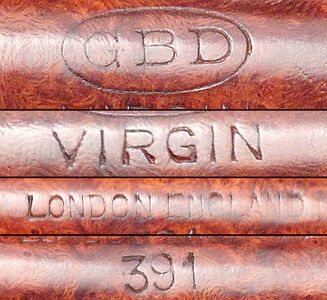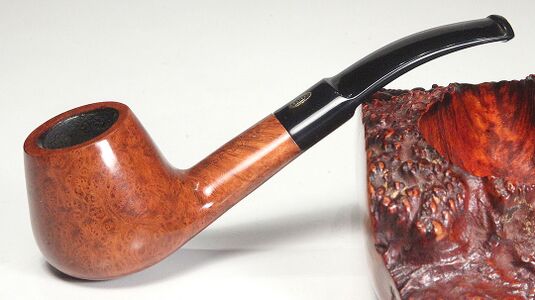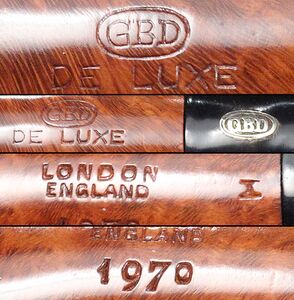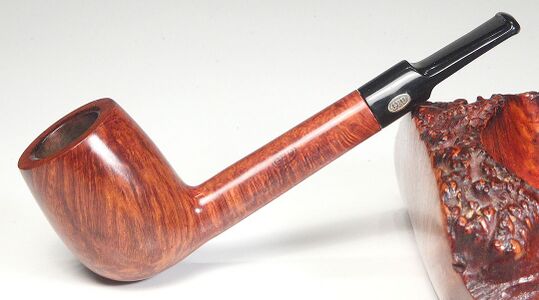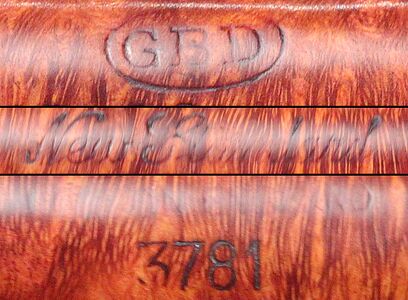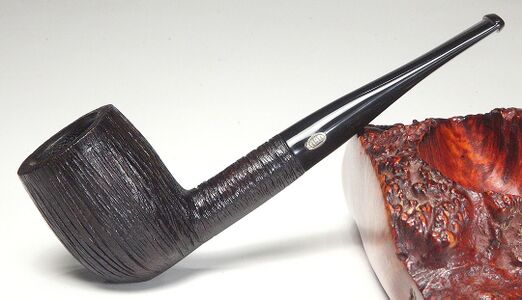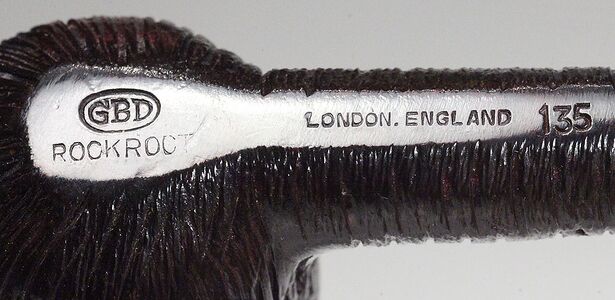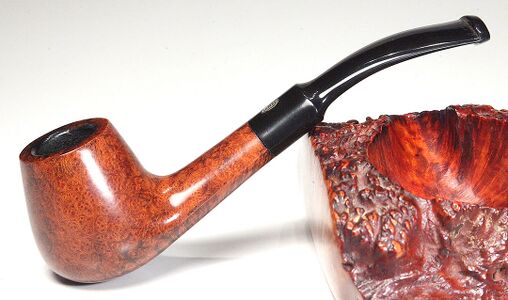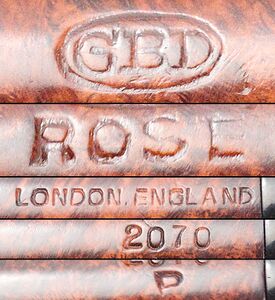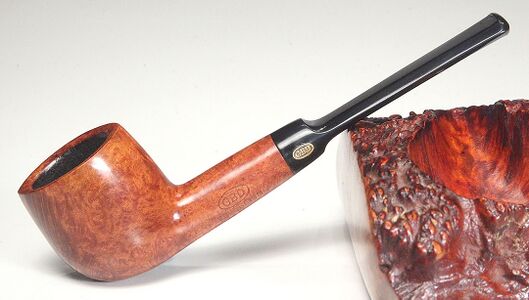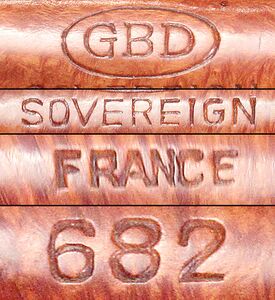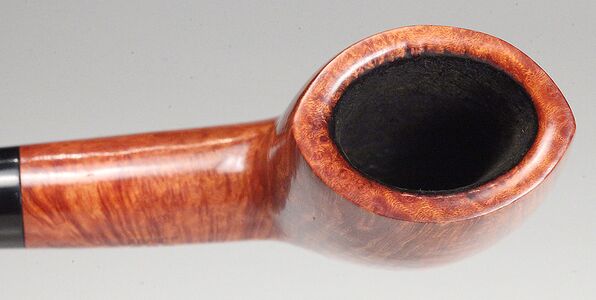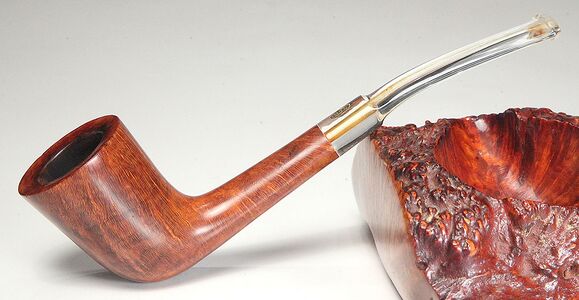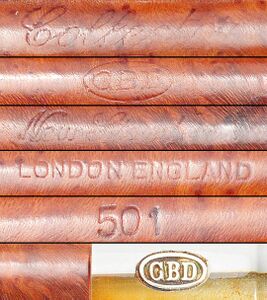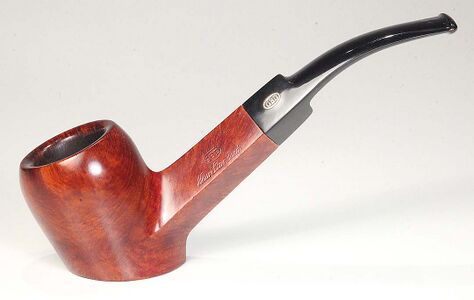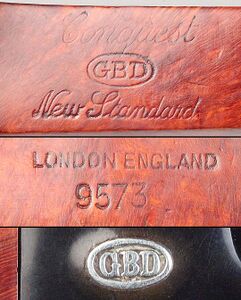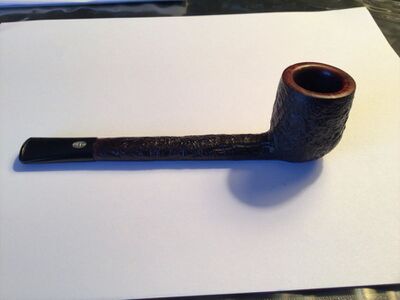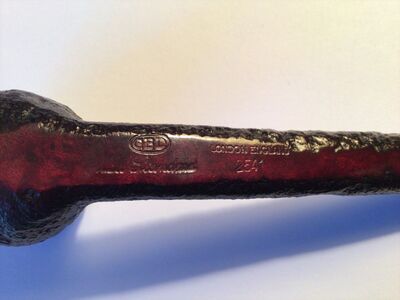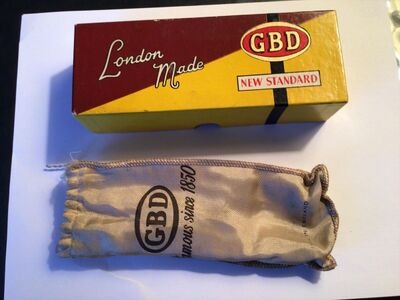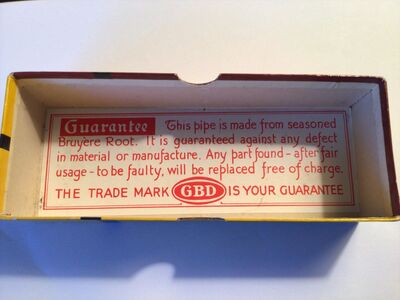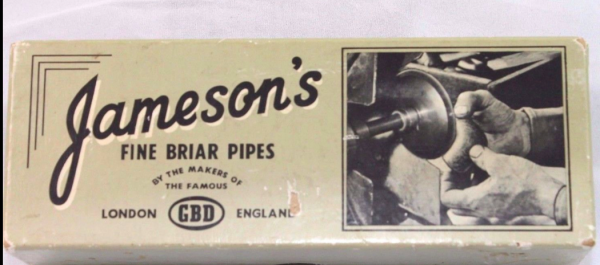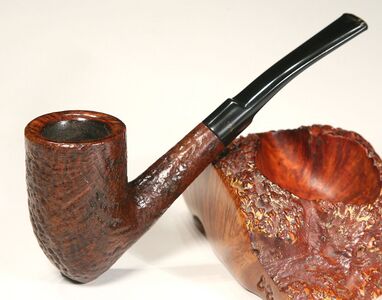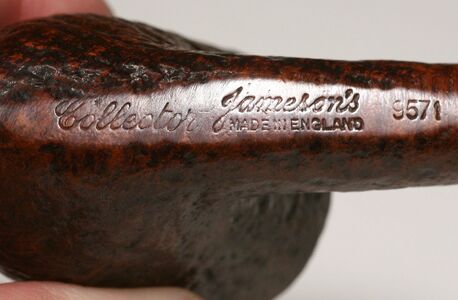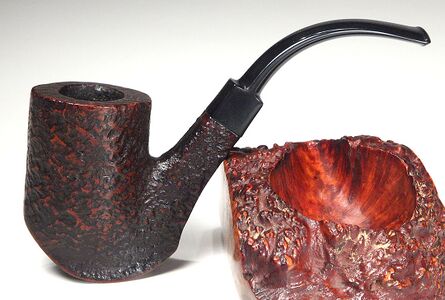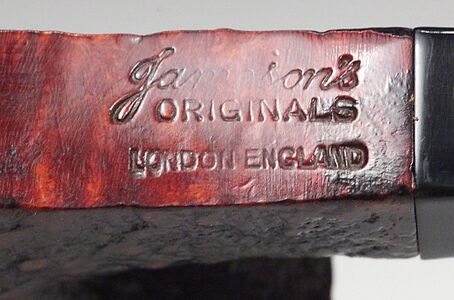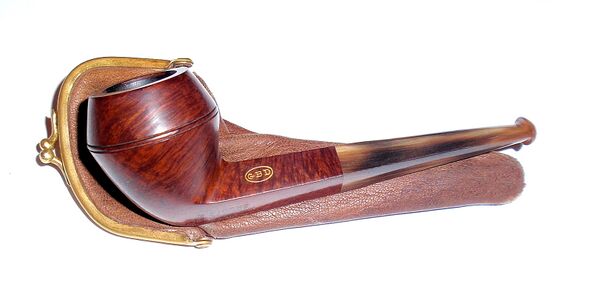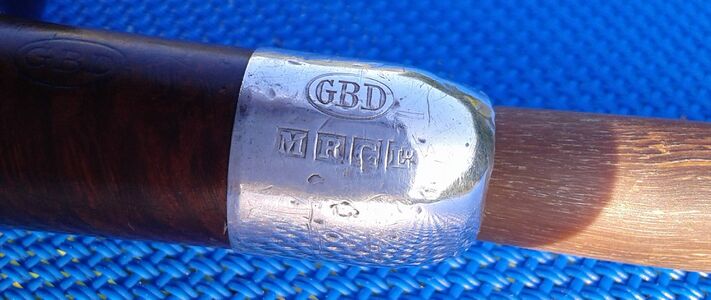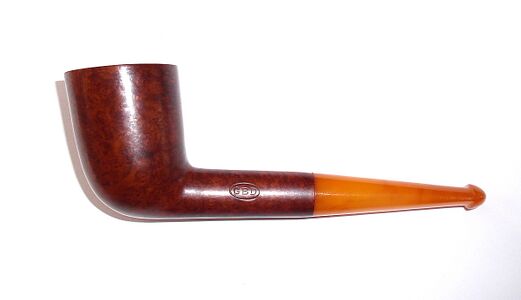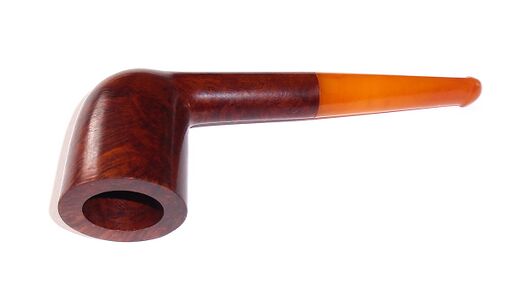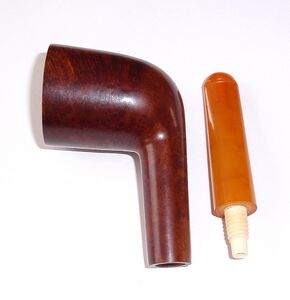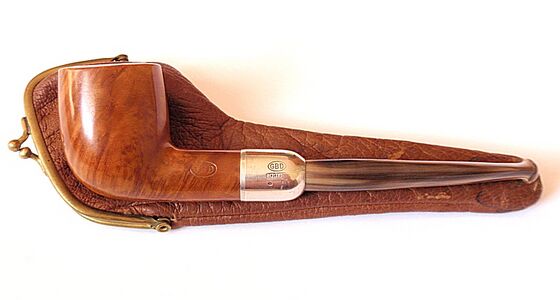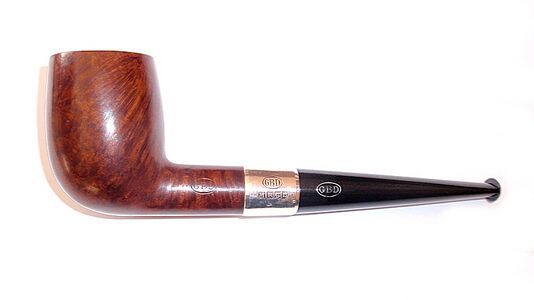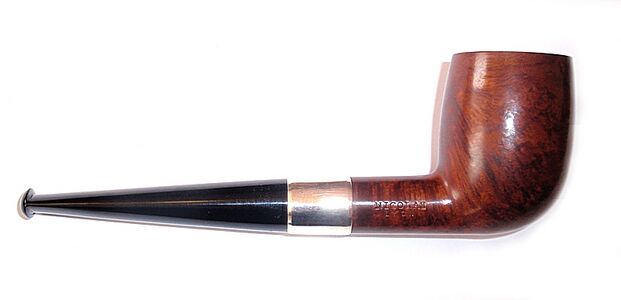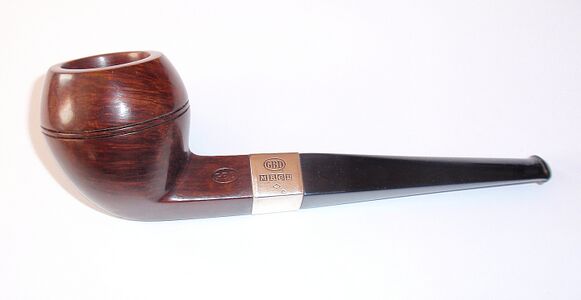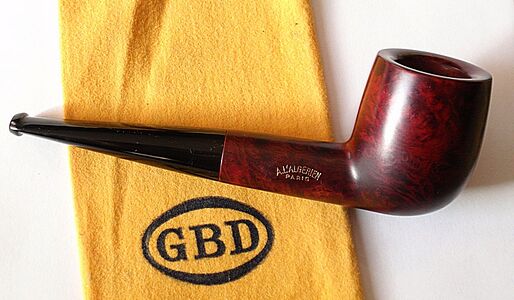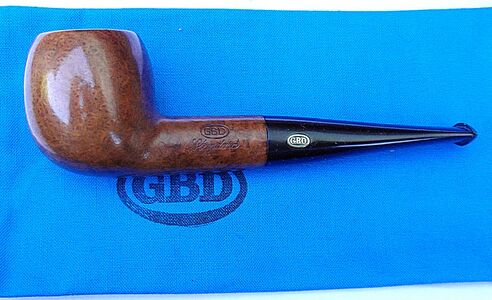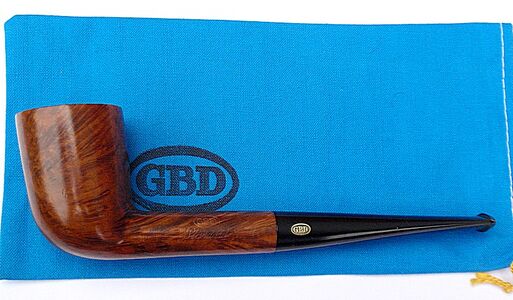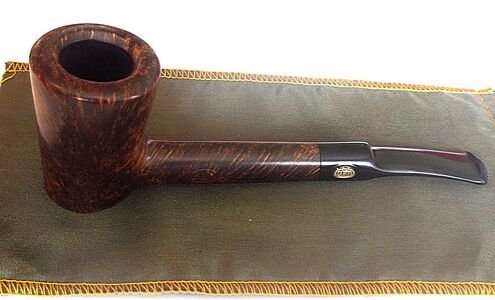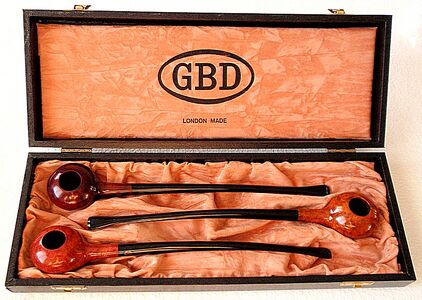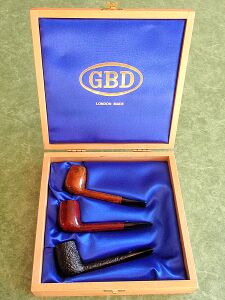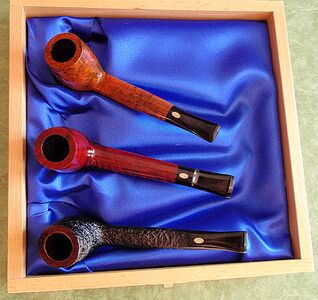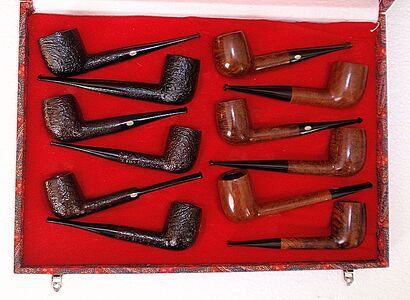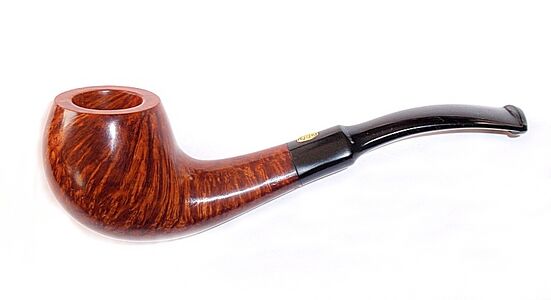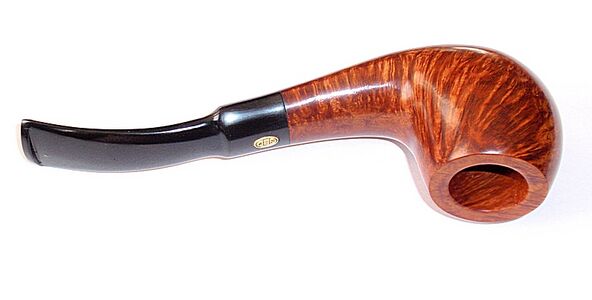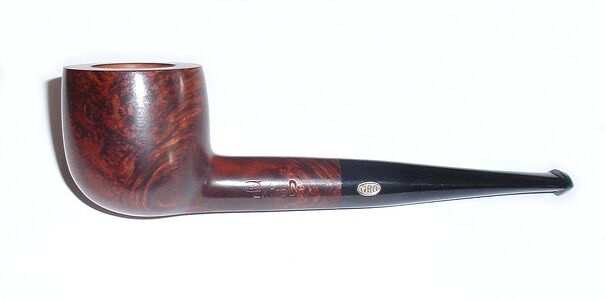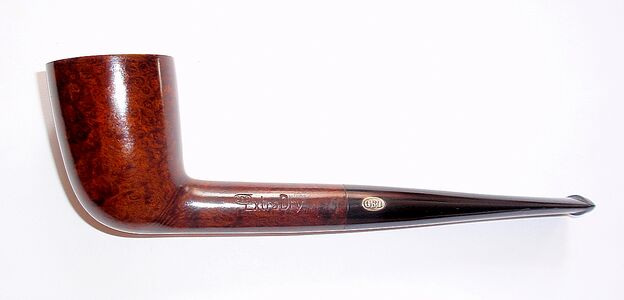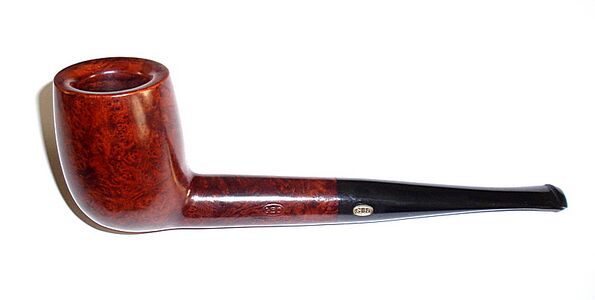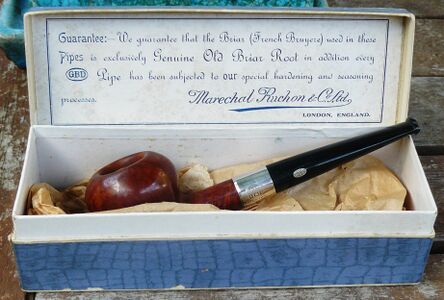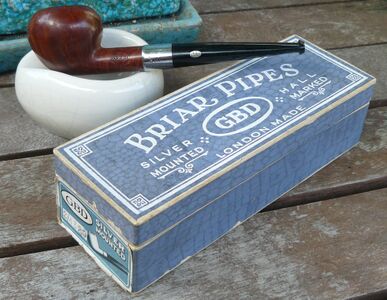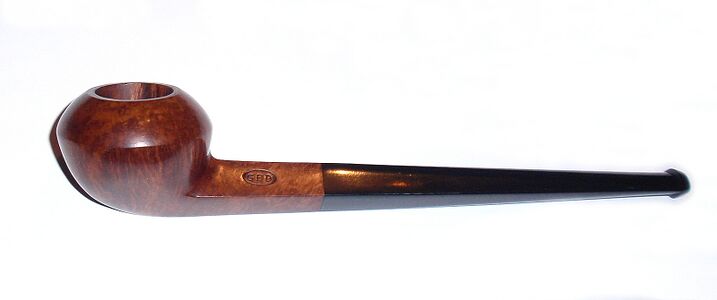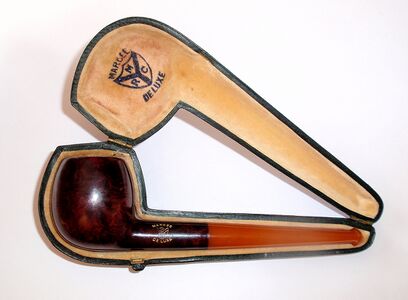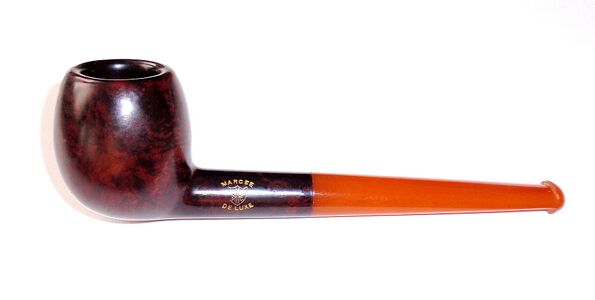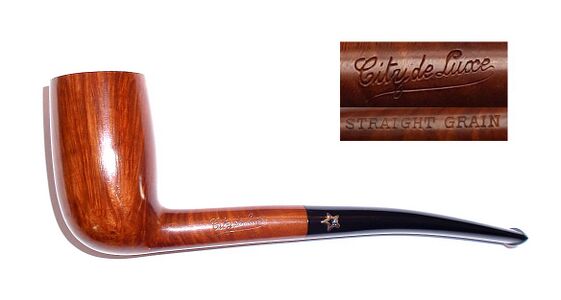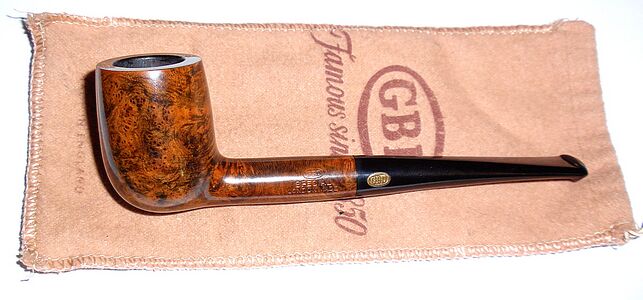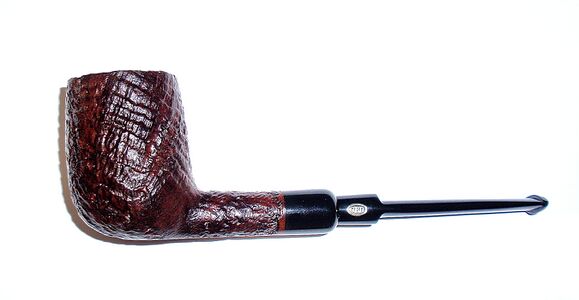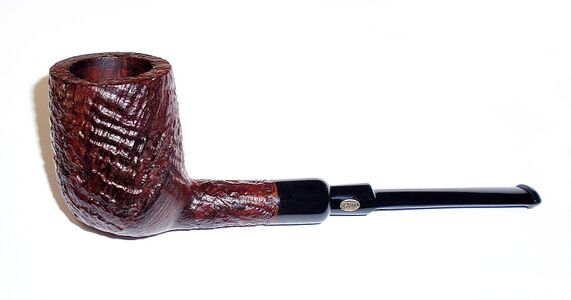GBD
A history of GBD
In 1850 three gentlemen got together in Paris to establish a firm dedicated to the fabrication of Meerschaum pipes – a courageous step in politically restless times. Ganneval probably came from the area of Saint-Claude where he had learned making wooden pipes. Bondier's family obviously came from Paris and had emigrated in 1789 to Geneva. He himself had worked as a wood turner in the clay and china pipe industry in and around Saint-Claude making stem extensions etc. Donninger was an Austrian or Swiss and had worked in Vienna, the world's center of the Meerschaum pipe. They agreed on the acronym GBD selecting the initials of their surnames. Bondier survived his partners for nearly 30 years. Their places were taken by others. Hence the property of GBD and therewith the company's official name changed several times.
- Ganneval, Bondier & Donninger
- Bondier, Ulrich & Cie.
- Bine, Marechal & Cie. and finally
- A. Marechal, Ruchon & Cie.
Meanwhile the GBD name was well established and thus retained. August Marechal and Ferdinand Ruchon led the firm into the 20th century. They were in charge of the company for more than 50 years.
Few details are known about the early fabrication of Meerschaum pipes. But as elsewhere too, the bulk was made as figural carvings. However at a remarkable early time GBD also offered standard models such as Bents, derivations of clay pipes reminding of current Dublins or Belges and early Bulldog variations.
Very early the proprietors of GBD recognized the inestimable advantages of briar wood for tobacco pipes. Shortly after the first fabrications in Saint-Claude had started they fixed contacts with suppliers there and began to obtain the new raw material to produce briar pipes in Paris. Soon the briars outdid the Meerschaums as the mainstay product. Business and reputation developed quickly and well. During it's first 40 years, GBD was honored with 15 medals of achievement on important international fairs worldwide. This helped a lot to introduce the brand successfully not only in Europe, but also in the USA, Canada, Australia and a little bit later in South Africa. From the very beginning GBD obtained only best quality stummels and/or pre-drilled pipes.
At that time the prices for pipes were primarily diversified by the materials used for the stems and their extansions and the number and the styling of silver or gold bandages. Amber, horn, ivory and quill were used widely before around the end of the 1870's Vulcanite was used more frequently. The better clientele appreciated costly manufactured tailor-made cases. A survey dating from 1886 shows basic program of 125 shapes, including 12 Billiard, 36 Bent and 46 Dublin (or similar) shapes. Many of them displayed a "hoof" to allow the pipe to sit on plain surfaces. These program formed the kernel of GBD's splendid presentation at the Amsterdam World's Fair 1888. A distinguishing mark of the GBDs were the slim shanks.
Early GBDs were made only in one single grade concerning the wood’s quality, later supplemented by a second one, and there was only a very limited number of finishes. But toward the end of the 19th century, the demand changed. For example the Britons preferred darker stainings. More differentiated customer’s wishes made the introduction of additional markings necessary. GBD Xtra and GBD Special were very early models who’s names indicated special final treatments and / or fitments. The standard quality was stamped simply with GBD.
- French-made 1892 GBD bulldog. The pipe is unique not only for its age and condition, but it appears to have some connection to the renowned French general, Alfred-Amédée Dodds. Courtesy Anthony Cook (cooksfinepipeworks.com), who restored it.
At the end of the 19th century GBD offered 1,500 models(!). (Please note however, that the same shape offered with three different materials for the stems was counted thrice!) In the first decade of the 20th century stems made of amber and synthetic amber were still widely used, but Vulcanite and horn had become the most popular materials. A further sign of the times were army mount pipes which were available meanwhile in 30 different shapes of inceasing popularity. The winner of the day was the Billiard (36 shapes now), along with 36 Bents and 32 Dublins / Zulus. Best newcomer was the Bulldog (15). The hoofs were almost out of fashion.
There is a very simple explanation for GBD's program to turn more "British": GBD became a British company soon after the turn of the century! In 1902 Marechal and Ruchon sold GBD to A. Oppenheimer & Co. in London. Charles Oppenheimer had founded this successful trade business in 1860 as an import-/export house. His brothers David and Adolphe and brother-in-law Louis Adler soon joined him. Adolphe took over when Charles went to Germany as British ambassador. Briar pipes were among the first products traded. The business relation to GBD in Paris began as early as 1870. Being the most important customer in the English speaking world, Oppenheimer & Co. were designated as sole distributor for Great Britain, the USA and Canada in 1897. Especially Adolphe Oppenheimer had a burning interest in the pipe business, and Louis' son James Adler shared that. He should play the most important role in the amicable merger of GBD. A. Marechal, Ruchon and Cie. in Paris was now Marechal, Ruchon & Co. Ltd. (see Marechal Ruchon & Cie. page) - a British firm with four directors: Adolphe Oppenheimer and James Adler had their seat in the head office in London while Auguste Marechal and Ferdinand Ruchon went on leading the GBD factory in the Rue des Balkan in Paris, which was considerably extended and modernised. Ruchon acted as CEO.
At the same time when the negotiatios with GBD started Oppenheimer also acquired two pipe factories in Saint-Claude: Sina & Cie. and C.J. Verguet Freres. Merging them a huge plant came into being that was thoroughly reconstructed and reorganized. The management was headed by Lucien Verguet. This new Saint-Claude factory was ready to operate in 1906. Beside it's very own commercial activities in pipe production it's main task was to supply prefabricated bowls.
Simultaneously Oppenheimer started to build a pipe factory in London. It was opened in 1903, but the forecasts had been over-optimistic for it's capacity could not be utilized to the full until World War I. Things changed as the French pipe factories lacked more and more workers who were called to the front. In 1916 the ledgers registered that 18,000 of 27,000 dozens bowls manufactured in Saint-Claude were determined via GBD Paris for GBD London. Wherewith London had become the more important location.
After the war, GBD continued production both in London and in Paris. London GBDs mainly went into the national trade and as well into the British Empire and the USA. Paris on the other hand served the French and the other European markets. The location of the factories influenced the GBD history furthermore in the future although later on the products of both countries occasionally were marketed side to side to match special market requests.
In 1920 Oppenheimer had purchased BBB (Blumfeld’s Best Briar, formerly A. Frankau) and little later Loewe & Co. and large shares of Comoy's of London. The economic crisis in the early 1920s induced the foundation of Cadogan Investments Ltd., named for it’s seat at Cadogan Square in London. The Cadogan group was a superordinated holding company, in order to tune all activities of Oppenheimer’s brands in the pipe industry. Whereby an extensive independence of the single brands was preserved. Remember, the Oppenheimers and Adlers weren’t pipe specialists, but rather sales people who depended on their experts in the British and French plants.
Several Catalog pages from a Circa 1950s Oppenheimer Pipes Catalog featured GBD models, as well as several of the other brands.
The claims after the 1st World War demanded further distinctions. First of all was the London Made, which became the Standard London Made, followed by the New Era-- in 1931 the top model asking 12½ Shilling. The Pedigree, although sketched around 1926, was not produced until the later 1930s. The New Standard was introduced in order to give the popular Standard of the 20s a higher rank in value. The Prehistoric, a deeply sandblasted black pipe, that still carried the small GBD Xtra stamp, was entirely new and unusual.
The French GBDs more or less followed the same developments, although Xtra and Speciale very longly used there. In the late 1920s a GBD with a metal filter system was introduced under the name Extra Dry. Also from Paris came another important new feature: the introduction of the inserted metal plate with the GBD initials on the stems. That insert added a further "touch of class" to the pipes and in London it was attached immediately.
The solid demand for GBD pipes also encouraged the management to introduce a number of sub brands designed to win new buyers. We can list such sub brands as follows:
- The City de Luxe (1921) had an inserted star on the stem as trademark and were marketed in England and in France. These pipes were the bestseller of the 5½ Shilling class in the 1930s in Great Britain.
- Reserved for the French market remained the even more favorable GBD brand Marcee, a derivative of Marechal Ruchon & Co. Ltd. that was offered until the 2nd World War and for another one or two years afterwards.
- The Camelia - made in London as a 2½ Shilling line - was only around for a few years.
- Important to mention is also the Riseagle—completely produced in Paris before the wartime for England’s smokers who wanted “a cheap but dependable British made pipe”… one of the most successful 1 Shilling pipes until 1939! The introduction of the luxury impact on the excise tax for pipes after the war put an end to this cheap brand.
Other brands of this time were marketed with even larger independence. The Dr. Plumb's had been developed by the Parisian sales manager J.B. Rubinovich in 1925 when GBD France needed “a cheap line of pipes" especially for the Canadian market. In fact, the new brand was nicknamed for Mr. Rubinovich’s secretary Leslie W. Plumb, whose most important business was "to doctor figure" the ledgers. Dr. Plumb’s made their way not only in Canada. - The Peter Piper, as well as the Dr. Plumb’s produced in Saint-Claude, is another great example that stampings like "London made" or "London England" are not always totally trustworthy also on older pipes! Not only today numberless brands are made in Saint-Claude and stamped with whatever the buyer wants to be stamped...
Galleries
GBD Pipe with "MRC" band, Marechal Ruchon & Cie, courtesy Racine & Laramie Tobacconist
An early GBD Meerschaum, courtesy of Todd Becker "Deadmanspipes", via Janise Mills
GBD Estate Pipe Virgin Bent Billiard 508, courtesy Smoker's Haven
GBD Estate Pipe Unique Magnum Sized Bent Champaigne Sitter, courtesy Smoker's Haven
GBD Estate Pipe Unique Magnum Sized Bent Champaigne Sitter, courtesy Smoker's Haven
courtesy Smoker's Haven
GBD SPECIALE, courtesy Blaik-Pipes
GBD NEW ERA A.L'ALGERIEN PARIS 1930-40, courtesy Blaik-Pipes
GBD UNIQUE Straight Grain, London England, courtesy Blaik-Pipes
- 1907 GBD, courtesy Racine & Laramie Tobacconist
- Counter Top Advertiser, courtesy Racine & Laramie Tobacconist
- French made GBD (Opera) 1880-1900, courtesy Yuriy Novikov
- French made GBD J.DELGAS 70 PASSAGE CHOISEUL (OOM PAUL) 1900-1910, courtesy Yuriy Novikov
- Bulldog, Hallmarked 1915, courtesy Tim Lomprey
- An early 3 star GBD, courtesy Doug Valitchka
Note: We are looking for additional dating information on this style of GBD nomenclature. Please add it here, or send it to sethile.pipes@gmail.com , and we can add it for you.
- Examples and details, courtesy Doug Valitchka
- New Standard Shape 2541 w/original box and sock, courtesy Bill McCullough and Jack Ritter
- Jameson's (GBD Second) examples and details, courtesy Doug Valitchka
- Various examples
The Paris factory moved to Saint-Claude in 1952. Since 1981 the majority of GBD pipes come from the English factory. At about that same time GBD merged with Comoy's, since then all production for both GBD and Comoy's comes from a single factory.[1]
The premium lines of GBD offered very good values, and are considered amongst the most affordable high end pipe of the 1960's and earlier and a rival in quality, design, and price to Dunhill. Smokers' Haven was the main retail supplier for GBD's in the US until the early 1980's.
GBD produced consistently well made pipes, almost entirely of Algerian or Grecian briar. In the late 1960's to late 1970's, they introduced the "Collector" and "Unique" lines, made primarily by Horry Jamieson, who had carved for Barling for many years, and was skilled in freehand design. Older GBD pieces are excellent smokers and unique in design. They did an excellent executions of classic pipe shapes, as well as some beautiful freehands in the "Unique" line.[2]
The following list comprises the better grades in descending order:
Pedigree, Pedigree I, Pedigree II, Straight Grain, Prodigy, Bronze Velvet, Virgin, Varichrome, Prestige, Jubilee, New Era, Prehistoric, International, Universe, Speciale Standard, Ebony, Tapestry, New Standard, Granitan, Sauvage, Sierra, Penthouse, Legacy, Concorde.
Circa 1973 chart of lines
Virgin: "Only the finest of closely grained briar is utilized for this exceptional pipe. Natural finish"
Century: "A golden finish created to celebrate over a century of manufacturing the finest briar pipes."
New Era: "The beauty of this pipe's perfect briar is accentuated by the richness of the 'take-off' dual finish."
Prestige:"This pipe features a black handcut perspex mouthpiece which precludes discoloration and 'bad taste' after continual smoking. Only the finest of the fine-grained bowls are selected for this handsome matt virgin finished briar."
Prehistoric Perspex: "The deep sandblasting sillhouettes the grain in bold relief. The crystal clear mouthpiece creates an attractive contrast to the deep dark finish."
Dating GBDs
The following is from an A.S.P post by G.L. Pease dated 1996/05/18, and used by permission
Dating GBD's is difficult. On older pieces with hallmarked silver bands, one can look up the hallmark. Once GBD and Comoy's became one, the linear "London England" stamp became the round "Made in London England" stamp used on all later Comoy's.
Even the stem is not a sure-fire method. All the way through the 1960's and early 1970's, some pipes were fitted with molded stems, while others were hand-cut. Not all hand-cut stems are marked as such, and it doesn't depend on grade. (In my collection is one of the finest Pedigrees I've ever seen. It is un-smoked, made in the 1960's, and has one of the poorest molded stems I've ever seen on a production pipe! But, the wood would make a Dunhill DRH, or a Charatan Coronation blush!) That said, you can be assured that if the stem has a painted GBD rondelle, rather than a silver or brass one set into the stem, that it is a late-model, made after the merge with Comoy's. These were the beginning of the dark-days for GBD (and Comoy's, for that matter) in my opinion.
In some cases, the grade gives some clues. Xtras haven't been made since the 1930's, for instance (the line discontinued in 1937 - editors addition), and the Century was first introduced some time in the 1960's or 1970's as I recall, from what scant literature I've been able to acquire. GBD introduced new shapes and dropped shapes almost every year it seems (an exaggeration, I'm sure), so if you had a lot of shape charts, you might be able to find a range.
Incidentally, G.L. Pease has a beautiful collection of older GBDs, as shown is this very interesting article called, "Pieces From My GBD Collection".
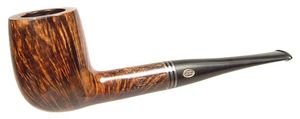
Current Production
Current GBD website. GBD is now made by Cadogan, who also make Comoy's of London, Dr. Plumb's Perfect Pipes, BBB, and Orlik Pipes. [1]. Since the merger in 1981 with Comoy's, GBD pipes are not considered to be of the quality they were under the original companies. Metal rondelles were discontinued after the merger with Comoy's. The brass rondell made a reappearance on new production GBD's. The new lines are Autumn Gold, Bermuda, Facet, Pub and CW (Churchwarden).
Contact Information
E-mail: mailto:cad@oppenheimers.co.uk Tel: 08708 722 754 / 08708 722 755 Fax: 08708 722 750 (Trade customers only)
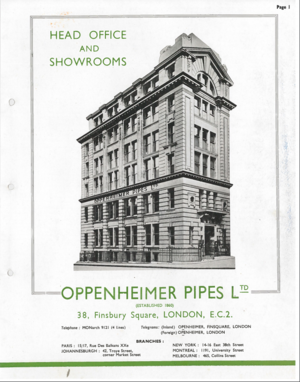
Onsite links
- Wonderful Circa 1950 GBD featured Oppenheimer Pipes Catalog
- GBD Shapes/Numbers
- GBD Model Information
- Pieces From My GBD Collection
Offsite links
This site has some excellent GBD Model Information
Here is a 1961 GBD Flyer from: Chris' Pipe Pages
Translations
NEW French Version GBD.fr. Many thanks to Jean-Christophe Bienfait for his translation
